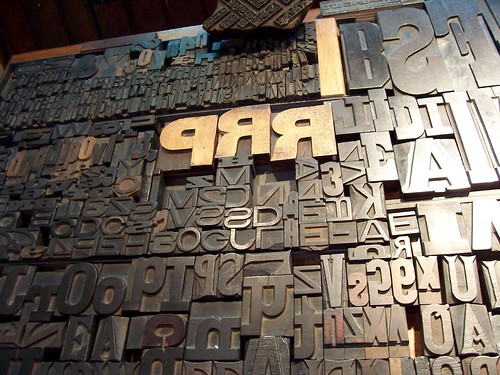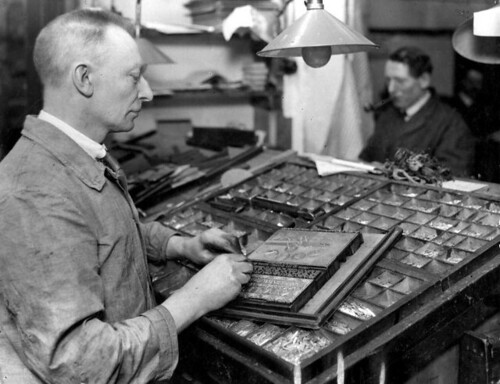One might be inclined to view William Blake’s illuminated books as throwbacks to mediaeval illuminated manuscripts. Yet they should rather be understood as “remediating” older media. According to Bolter (2001, p. 23), remediation occurs when a new medium pays homage to an older medium, borrowing and imitating features of it, and yet also stands in opposition to it, attempting to improve on it. In the case of Blake’s illuminated books, one of the older media being remediated was the mediaeval illuminated manuscript, but another medium being remediated was the printed book, which in Blake’s time had already been in use for three centuries.
Blake adopted the way in which the richly illustrated texts of mediaeval illuminated manuscripts combined the iconic and the symbolic so that the former illumined meaning of the latter, the images revealing the spiritual significance of the scripture. Blake also seized upon an aspect of illuminated manuscripts which would later impress John Ruskin as well (Keep, McLaughlin, & Parmar, 1993-2000)—the way in which they served as vehicles for self-expression. The designs of manuscripts such as the Book of Kells and the Book of Lindisfarne, for instance, reflected the native artistic styles of Ireland and Northumbria and often depicted the native flora and fauna of those lands as well. Blake also adopted some of the styles and idioms of illustration found in mediaeval illuminated manuscripts, producing images in some cases quite similar to ones found in mediaeval scriptures and bestiaries (Blunt, 1943, p. 199). It seems that he also embraced the idea, embodied in the creation of illuminated manuscripts, that the written word can be something sacred and powerful and that it is therefore something to be adorned with gold and lively colours.
Blake’s illuminated books broke with the medium of mediaeval manuscripts mainly by virtue of that which they adopted from the medium of the printed book. Blake produced his illuminated books first by making copper plates engraved with images and text, deepening these engravings with the help of corrosive chemicals. He then used inks to form impressions of the plates on sheets of paper, often colouring the impressed images further with watercolour paints (Blake, 1967, p. 11-2). His use of the copper plates and inks bore similarities to the use of movable type and ink to create printed books. For many years it was believed that, despite this similarity, Blake developed his illuminated books partly as a reaction against the mass production of books, hearkening back to the methods of mediaeval craftsmen – specifically the artists who produced illuminated manuscripts – who created unique items rather than mass produced articles. Consequently, it was believed that after he produced the copper plates for the illuminated books he created only individual books on commission. This belief, first championed by 19th century writers who claimed William Blake as a predecessor (Symmons, 1995), has recently been overturned, however, by the work of Joseph Viscomi. As a scholar and printer who attempted to physically reproduce the methods that Blake employed to create his illuminated books, Viscomi concluded that Blake mass produced these books in small editions of about ten or more books each (Adams, 1995, p. 444).
The primary way in which the illuminated book was meant to improve on the printed book did not lie in the avoidance of mass production, but rather in the relation between the image and the word. In printed books, engraved images could be included with the text, but as the text had to be formed with movable type the image had to be included as something separate and additional (Bolter, 2001, p. 48). In Blake’s illuminated books, in contrast, the written word belonged to the whole image first engraved on the copper plate and then transferred to paper. It participated in the imaginative power of the perceived image, rather than just retaining a purely conceptual meaning. As with the text of mediaeval illuminated manuscripts, the words in Blake’s illuminated books often merge the iconic and the symbolic (Bigwood, 1991). For example, in plate 22 of Blake’s The Marriage of Heaven and Hell, the description of the devil’s speech trails off into a tangle of diabolical thorns. Furthermore, the words are produced in the same colours used in the images to which they belong, and partake in their significance—light watercolours being used in the first edition of the joyous Songs of Innocence and dark reticulated inks being used in the gloomier Songs of Experience (Fuller, 2003, p. 263). As John Ruskin later observed, this ability to use colour in the text of illuminated books made it a form of writing that uniquely expressed its creator’s imagination (Ruskin, 1888, p. 99).
Like several other artists of his time, Blake was disturbed by the mechanistic and atomistic conception of nature first put forward by the ancient philosopher Democritus and then later revived around the seventeenth and eighteenth centuries by natural philosophers. This was the conception of nature as consisting of atoms in an empty void operating in accordance with mechanistic laws. Blake saw this as connected to the type of rationalism that would impose strict laws of reason on the mind and imprison the divine creative power of the imagination. Like others who opposed the mechanistic and atomistic worldview, Blake was particularly repelled by the mechanistic account of colour offered by Isaac Newton, voicing his objection to “Newton’s particles of light” (Blake, 1988, 153). It was thought that such an account treated colour in isolation from the power of the imagination to which it was naturally connected. It was also seen as severing colour from the living spirit of nature—the poet Goethe famously offering a complex alternative theory of colour which saw it as the result of a dynamic interaction of darkness and light.
For Blake, the printing press would at the very least be symbolic of the mechanistic an atomistic view of the world, the words in the printed text no longer partaking in the power of the imagination and the visible image but rather consisting of atoms of movable type and lying separated by voids of empty space. The primacy of the imagination would be better served by the medium of illuminated books, where the image did not only illuminate the conceptual meaning of the word but also subsumed the word and imparted a deeper significance to it. The imagination was of central importance for Blake, who was a professional engraver as well as a poet, and for whom the medium of the image was a more fundamental part of his life and work than the written word (Storch, 1991, 458).
The ability to mass produce texts in which the image was primary and the written word secondary would have implications for literacy and education insofar as it could widely disseminate works that encouraged imaginative and perceptual understanding over strictly conceptual thought. While the illuminated book as such never became a widespread medium, some of the principles involved in its remediation of the illuminated manuscript and the printed book survived in the medium of the comic book and the graphic novel, which could also be said to realize some of its implications. These works were also mass produced and also differed from the printed book through the relation between the word and the image. For example, the way in which the symbolic word is made to partake in the imaginative power of the iconic image can be seen in the development of comic books in Britain. Early 20th century British comic books generally consisted of rows of images without words, each image having a block of text below it. When comic books adopted the style that introduced speech bubbles, thought bubbles, and sound effects into the image itself, the words became part of the action.
The illuminated book can also be seen as a precursor of hypertext and its remediation of the printed word, specifically insofar as the image in hypertext is coming to dominate the written word (Bolter, 2001, p. 47). In this regard, hypertext could also be said to be carrying through the implications that illuminated books posed for education and literacy. This is not to say that there are not significant differences between these media, of course. Creators of hypertext may look to the illuminated book for inspiration but leave behind the more laborious aspects of the medium, such as the use of copper plates and corrosive chemicals. This may be seen as both an improvement and a loss. One feature of the illuminated book absent in hypertext is the close connection between the work and the bodily act of creating it. As Carol Bigwood observes (1991, p. 309), reading Blake’s illuminated books is a perceptual experience in which we sense the movements of Blake’s hand and the rigidity of the copper on which the image was first made. So while the illuminated book remediates the printed word it may itself be remediated by hypertext.
References
Adams, H. (1995). Untitled [Review of the book Blake and the idea of the book]. The Journal of Aesthetics and Art Criticism, 53(4), 443-444.
Bigwood, C. (1991). Seeing Blake’s illuminated texts. The Journal of Aesthetics and Art Criticism, 49(4), 307- 315.
Blake, W. (1988). Selected writings. London: Penguin.
—–. (1967). Songs of innocence and of experience. Oxford: Oxford University Press. (Original work published 1794).
Blunt, A. (1943). Blake’s pictorial imagination. Journal of the Warburg and Courtauld Institutes, 6, 190-212.
Bolter, J. D. (2001) Writing space: Computers, hypertext, and the remediation of print (2nd ed.). New Jersey: Lawrence Erlbaum Associates.
Fuller, D. (2003). Untitled [Review of the book William Blake. The creation of the songs: From manuscript to illuminated printing]. Review of English Studies, 54(214), 262-264.
Keep, C., McLaughlin, T., & Parmar, R. (1993-2000). John Ruskin, William Morris and the Gothic Revival. The Electronic Labyrinth. Retrieved from http://elab.eserver.org/hfl0236.html
Ruskin, John. (1888). Modern Painters (Vol. 3). New York: John Wiley & Sons.
Storch, Margaret. (1996). Untitled [Review of the books Blake and the idea of the book & Blake, ethics, and forgiveness]. Modern Language Review, 91(2), 458-459.
Symmons, Sarah. (1995). Untitled [Review of the book Blake and the idea of the book]. British Journal of Aesthetics, 35(3), 308-9.



